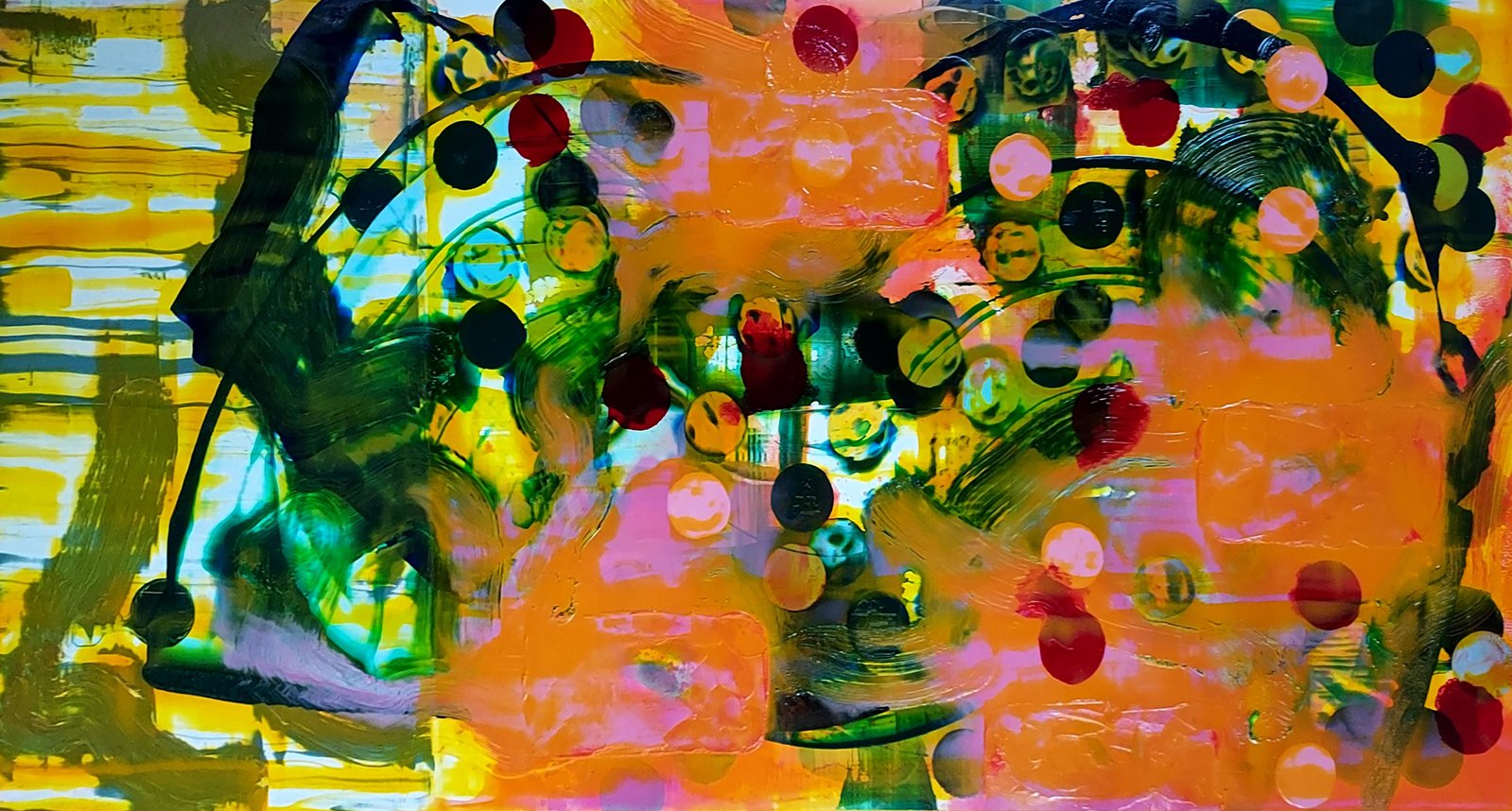
“He puts the “juice” back into modernist painting, after Greenberg’s post-painterly theory squeezed it out.”
JOHN CRONIN
John Cronin has been exhibiting since the late 1980s having graduated from the National College of Art and Design (NCAD). In the intervening years his work has been exhibited in Europe, U.S. and Asia, alongside the likes of Seán Scully, Cecily Browne, Ian Davenport, Mark Francis, Howard Hodgkin, Callum Inness and Jason Martin.
While his work's primary concern is abstract painting in the age of artificial intelligence, the titles of his exhibitions often reflect a desire to add a thematic twist to each new body of work. Through a diverse range of exhibitions that includes Standard Deviation, Augmented Reality, Serein, MHz, Palinode, ZXX and Artificial Bee Colony we have seen him continually extend the language of his practice.
“I see myself as a contemporary painter working in the resurgent field of abstraction.”
“For painting to be relevant it must reflect the times it was produced in and also move with the times. Just as the advancements of the German petrochemical industry inspired the impressionists and photography changed our perceptions and understanding of art, AI will recalibrate how we create but unlike other advancements it has the potential to change what it is to be human.”
“Through varying the type of support I use, I can create further dialogues in the work. As my work is concerned with painting in the age of artificial intelligence the use of a thin ‘floating’ aluminium support seemed more appropriate as it alludes to modern technology and screens. Having worked on aluminium for decades I returned to canvas for the ‘Artificial Bee Colony’ works. I wanted to exploit the art historical narrative around a canvas and it’s materiality. Canvas has a slight sag, which allowed me to control the pooling of the paint to a certain extent, giving me an ‘organic’ mark making system to complement my mechanical and gestural style. This is not possible with the very rigid aluminium support where the paint sits on top of the support as opposed to being absorbed by the canvas. Canvas takes the paint from you whereas aluminium allows you to place the paint on it. I rarely use brushes on aluminium but they are important on canvas. With both systems I rely on palette knives and spreaders of various forms.”
John Cronin is represented by Green On Red Gallery, Dublin.
Artificial Bee Colony 5 : Automated Bias
The title comes from the Artificial Bee Colony (ABC) algorithm. This algorithm is a swarm-based optimisation technique that simulates the foraging behaviours of honeybees and is used to solve continuous optimisation problems. So many of the algorithms that are beginning to govern our daily lives, are trained by our culture, and are learning to automate historical bias. AI perpetuates a feedback loop that can degrade the abilities and experiences that people consider essential to being human at a time when the world is coming to terms with historical, racial and gender injustices.
Automated bias refers to the phenomenon where biases are perpetuated or even exacerbated by automated systems or algorithms. These biases can arise from various sources, including biased data used to train algorithms, flawed algorithms themselves, or biased decision-making processes encoded into the systems by their designers.
The dots play with harmonies and contrasts. They undergo change within the piece, the red dots becoming visible when they enter the dark top section while the pale blue ones become tarnished after having been born out of the large pale blue swirling gestural movement. The grey-green ones are neutral, non-functioning, maybe spent forces. Some of the dots have a stillness at odds with the background but others are caught up in the maelstrom of events. The underpainting shows through them like a record of what came before them while later layers obscure them. Dots have a resonance that is correct for what I am putting forward. There is something complete about a dot. Within a composition dots can be free elements, units that can develop, migrate and evolve. They can become corrupted, mutated or be cloned. They can be both a chaotic and a unifying element.












